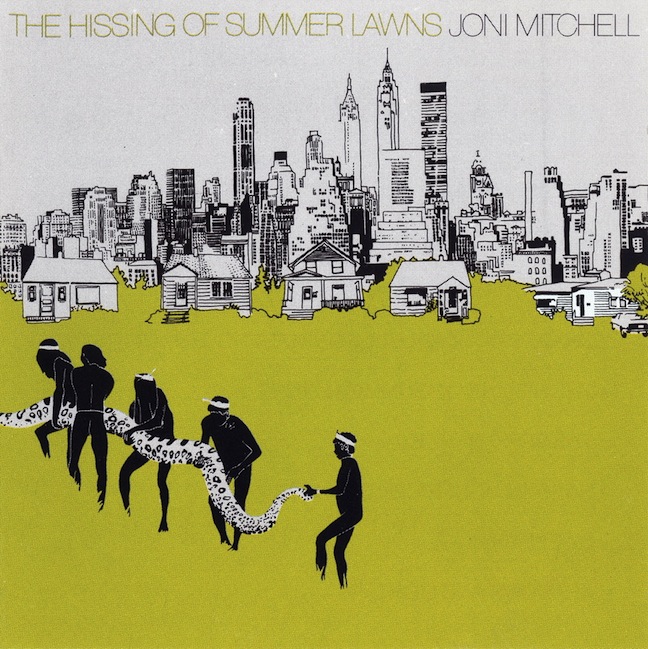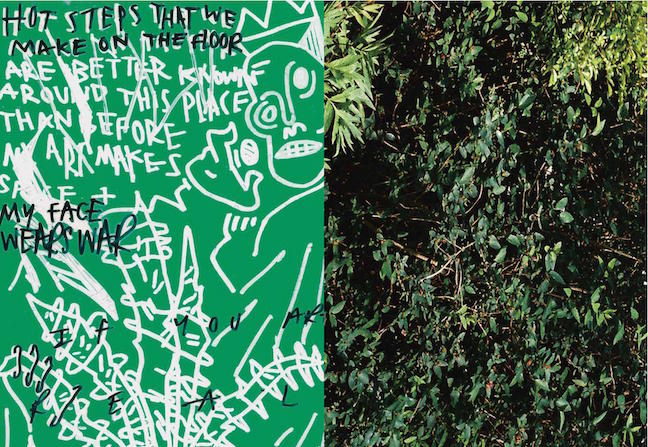
Photo via Facebook
As long as there has been scripted television, there’s been someone recording original music to be played under the scenes being acted out. Sometimes it’s a composer and sometimes it’s a band; but in the last few years, independent musicians have been getting in on the game.
Jónsi of Sigur Rós composed the score for the first season of WGN’s "Manhattan". Mogwai scored "The Returned" on BBC. Zach Rogue scored the HBO series "On Freddie Roach" and Ross Flournoy of the Broken West and Apex Manor scores original music for CNN. Liz Phair’s post-major label career work has been scoring multiple TV shows as part of a team with Marc "Doc" Dauer and Evan Frankfort, including The CW’s dystopic sci fi drama "The 100", the "90210" reboot, and USA’s "In Plain Sight".
The unifying characteristic of these shows is that while some have been critically lauded, they’re not prestige dramas or films. These are the blue collar equivalent of composer jobs, ones that require creating huge amounts of score on a grueling, weekly episodic schedule. Taking on one of these projects means that artists must put albums and touring on the back burner.
To understand why artists are pursuing this as a career path, you have to look at the the current landscape of music placements on TV, or as they’re known in the industry, needle drops. Lyle Hasen, the owner of Bank Robber Music and House of Hassle Music Publishing, works with Grizzly Bear, Beirut, Joanna Newsom, and hundreds of other independent bands by placing their music in shows. Music placement opportunities are up, thanks to the growing number of shows on basic and premium cable, as well as streaming—though the overall price for placements has been dropping for a decade as more bands and artists are willing to say yes to what was once considered a taboo revenue source. "There’s so much more programming looking for licensing material. Fees have dropped considerably over the last decade, so [bands] have to change their game a bit," Hasen says. "It’s more a game of small goals, where you try to get more licenses rather than a few biggies on the major networks."
Where in the previous decade there were a host of shows that specifically sought independent music for needle drops and considered them central to the show's aesthetic (i.e. "The O.C.", "Gilmore Girls", "One Tree Hill", "Gossip Girl", "Grey’s Anatomy", etc), shows now are more interested in whatever is new. "Some of your established licensing workhorse bands have aged out a little bit," Hasen says. "It’s ‘What do you have that’s new?’"
Jason Rothenberg, show runner for "The 100", wasn’t looking to hire someone from the indie world to score his post-apocalyptic sci-fi drama. He ended up working with Liz Phair because he’s close with one of her composing partners, although he’s a longtime fan. In the show's first two seasons, the composing team was creating nearly wall-to-wall score, as much as 30-to-36 minutes of music for a 42-minute episode. With two seasons under their belt, Rothenberg explains that they now have a library of music to reuse, but it was absolutely a grind during the first season to create that much new material for a 22-episode season on an 8-day shooting schedule, spread over 9 months.
Even a demanding job like this is an attractive and stable way to make a living for artists who might prefer to stay home with their families rather than tour 200 days a year. Artists can work a fixed schedule with a guaranteed paycheck—entirely unlike releasing a record. "It's so crazy when you do work for people to pay you when it's over. People in the music business say, 'We'll pay you 90 days after the next fiscal period, maybe if the accounting comes through.' I was shocked when I first did some ads. I did the work and then they just paid for it," Zach Rogue says of his experience composing.
Rogue scored a six-episode miniseries for HBO in 2012 about boxer Freddie Roach. For the Rogue Wave bandleader it involved learning an entirely new way of composing music. Working toward someone else’s vision was a challenge, as was creating additional music to accommodate last minute changes. With the deadlines and time constructs for the project, Rogue didn’t work on anything else during the time he spent composing for the show. "There were some days where I didn't sleep," Rogue says.
In her 2008 memoir, When I Grow Up, Juliana Hatfield recounts her 2006 tour with her band Some Girls. She details the mundanity of being on tour, playing in small clubs she’d played 15 years before. She reveals that she’s actually losing money by doing this tour in an anecdote about a guy she brings along to sell their merch who wants a raise midway through the tour. NPR took a look at the economics of playing smaller venues in 2011 and found it wasn’t unusual for bands to simply be able to cover their own costs of touring with the money they made. Moving up a tier to theaters helps, the manager of the National tells them, but requires more staff which costs more money which eats into the profits. In short, it’s a lot of work in which the band is the machine, while working as the composer on a TV series puts an artist into a smaller role as simply a cog in a bigger machine.
Rogue has since pursued other TV shows, saying the intellectual exercise of learning a new way to write music was rewarding. "I submitted to a TV show, but I was scared to get it, because I knew if I did that would be my life for a long time," he explains. Ultimately, Rogue says he also has to consider it because it would give him more time to be at home with his family and young children.
Perhaps one of the most important reasons an artist might consider taking this career route is one that Rothenberg brings up: passion. "It's a love of film and television [that drives people to the medium]. It's such an amazing art form because it aggregates all the other art forms—writing, photography, music and acting—all together. When it works, it really is transcendent," Rothenberg says. "The right piece of score can elevate a scene and show you what it's about. Those are the great moments, when I hear the score and see it to picture for the first time."



























 Rap Tees is a history of hip-hop design and branding as much as it is a catalog of want, in service of inclusion. This is a club where No Limit tanks are literally worn on the sleeve while the Grand Royal elephant sits on a couch, blazed out of his mind, trying to remember why he’s there. The secret password: "Grand Puba ‘Reel to Reel’ promotional fishing vest. Not everybody was invited. There’s the
Rap Tees is a history of hip-hop design and branding as much as it is a catalog of want, in service of inclusion. This is a club where No Limit tanks are literally worn on the sleeve while the Grand Royal elephant sits on a couch, blazed out of his mind, trying to remember why he’s there. The secret password: "Grand Puba ‘Reel to Reel’ promotional fishing vest. Not everybody was invited. There’s the  Some shirts place you there and not on eBay. It’s heartening to know that
Some shirts place you there and not on eBay. It’s heartening to know that  And did the Japanese guy at the
And did the Japanese guy at the  I’d be remiss to not acknowledge the green Skyywalker that ended up in the hands of Makoto Nagumato, proprietor of Weekend Records in Japan. I don’t know if Mark the 45 King remembers that night in 2003 when Makoto took a knee in front of his turn tables, as if to genuflect, waiting for someone (me) to surprise cape him like James Brown’s valet, while the 45 King’s records flew across the bar. (Not kidding.) The jacket now hangs in Makoto’s store. I traded it for a copy of Booty Shakin’ Breakout (Even less kidding).
I’d be remiss to not acknowledge the green Skyywalker that ended up in the hands of Makoto Nagumato, proprietor of Weekend Records in Japan. I don’t know if Mark the 45 King remembers that night in 2003 when Makoto took a knee in front of his turn tables, as if to genuflect, waiting for someone (me) to surprise cape him like James Brown’s valet, while the 45 King’s records flew across the bar. (Not kidding.) The jacket now hangs in Makoto’s store. I traded it for a copy of Booty Shakin’ Breakout (Even less kidding).




